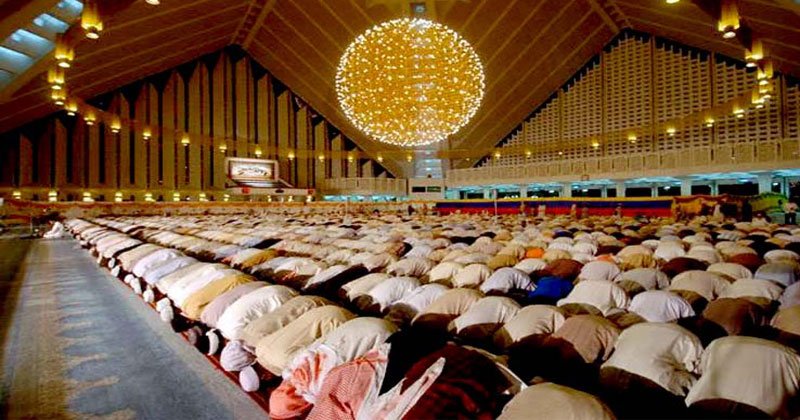Deen Digest | Observing Taraweeh in Ramadan

Taraweeh was one of the spiritual practices of Prophet Muhammad S.A.W in the month of Ramadan through his prophethood life on earth. The popular reports from his companions indicate that Prophet Muhammad (PBUH) used to offer 20 rakats of Taraweeh during the month of Ramadan.
The question now is: How many rakats did Prophet Muhammad use to observe as Taraweeh during the month of Ramadan?
The simple answer is: there is a difference of opinion regarding the number of rakats. Some reports say it was eight; some say it was eleven, while the others say it was twenty. What is clear here is that there’s no single Islamic school of thoughts that stands against Taraweeh; they all see it as essential spiritual practice in Ramadan.
According to Al-Bukhari and Muslim, in al-Mufhim li-mā Ashkala min Talkhīṣ Ṣaḥīḥ Muslim 2/388, Abu Abbas al-Qurtubi (may Allah be pleased with him) is reported to have said, “The scholars differed in their preferred number of cycles in night prayer. According to Malik, it is preferred to pray thirty-six cycles as this was regularly practiced by the people of Medina. Nafi’ said: I only know people to pray thirty-nine cycles and complete witr prayer with three cycles. Al-Shafi’i said twenty cycles. Many scholars said eleven cycles, in accordance with the tradition of Aisha cited.”
One of the most popularly quoted hadith was from Ibn Abbas (may Allah be pleased with him) is: “The Prophet (PBUH) would pray 20 Rakats and then Witr in the month of Ramadan.” This hadith shows that offering twenty Rakats of Taraweeh after Isha prayer and subh prayer is a Sunnah of Prophet (PBUH).
More so, Abu Salamah reported that when Aisha (may Allah be pleased with her) was asked how Prophet Muhammad used to observe is night prayers, she said: Aisha said, “He would not pray more than eleven cycles in Ramadan or other times. He would pray four cycles, but do not ask about their beauty or length. Then, he would pray four cycles, but do not ask about their beauty or length. Then, he would pray three cycles. I asked: O Messenger of Allah, do you sleep before witr prayer? The Prophet said: O Aisha, my eyes sleep but my heart does not sleep.” This is the hadith those who observe 8 rakats (cycles) of taraweeh follow. The other 3 cycle is referred to as Safh (2 rakats) and Witr (1 rakat).
Also, in another hadith, Abu Dhar Ghifari (may Allah be pleased with him) reported thus: “We (the Companions) observed the fasts of Ramadan with the Prophet (PBUH). In the whole month the Prophet (PBUH) did not lead us in prayer, until there were 7 days left in the month. The Prophet (PBUH) then led us in prayer on the 23rd, 25th and 27th night.”. This proves that having Taraweeh prayer in congregation is not unsunatic. during these three nights of Ramadan.
Essentially, in another narration, Aisha (may Allah be pleased with her) further said: “After these nights (23rd,25th & 27th) the congregation grew to a very large number on the 29th night. The Masjid of the Prophet (PBUH) had become filled to capacity. On this night, the Prophet (PBUH) only came out to lead the people for the Fajr prayer. After the Fajr prayer, the Prophet (PBUH) stated: ‘I knew that you had gathered for the night prayer (Taraweeh) but I feared that this prayer would become compulsory (Fard) upon you and you would find it difficult to fulfil.” This is to clarify further that Taraweeh is optional for anyone fasting in Ramadan; without it, your fasting is valid. However, it’s highly recommended that anyone fasting in the month of Ramadan should observe it because its reward is unquantifiably huge.
Should Taraweeh prayer be observed in congregation?
History shows that Caliph Abu Bakar (may Allah be pleased with him) never recommended praying Taraweeh in congregation. During his reign of as Caliph (may Allah be pleased with him), Muslims then continued on offering the Taraweeh prayer in Ramadan either individually or in the form of small congregations in their respective mosques. However, Caliph Umar (may Allah be pleased with him) was reported to have formalised observing Taraweeh prayer in congregation. Abu Rahman bin Abdul Qari (may Allah be pleased with him), in Al-Bukhari, narrates thus: “I left one night in Ramadan with Hazrat Umar bin Khattab (may Allah be pleased with him) and we headed towards the Masjid e Nabwi. In the Masjid we saw various groups of people praying alone or behind an Imam and they were scattered over the Masjid. Umar bin Khattab (may Allah be pleased with him) made a decision to congregate all the people behind Ubay ibn Ka’ab (may Allah be pleased with him).” Caliphs Uthman and Ali also follow suit, as they too ensured that Taraweeh prayer was observed in congregation throughout Ramadan.
Abi Abdur Rahman Salmi (may Allah be pleased with him), in Sunan Kabeer Baihaqi, narrates: “In the nights of Ramadan, Ali ibn Abi Talib (may Allah be pleased with him) called upon the recitors of the Quran and ordered one among them to lead the people in twenty Rakats of Taraweeh. Ali (may Allah be pleased with him) would lead the people himself in the Witr Salah.”
In a nutshell, if indeed you follow the sunnah of Prophet Muhammad (PBUH) and wish to accumulate rewards from Allah, don’t miss Taraweeh throughout the month of Ramadan. If the Prophet never missed Taraweeh throughout his years of prophethood, why shouldn’t you too emulate the greatest mentor of all Muslims?







